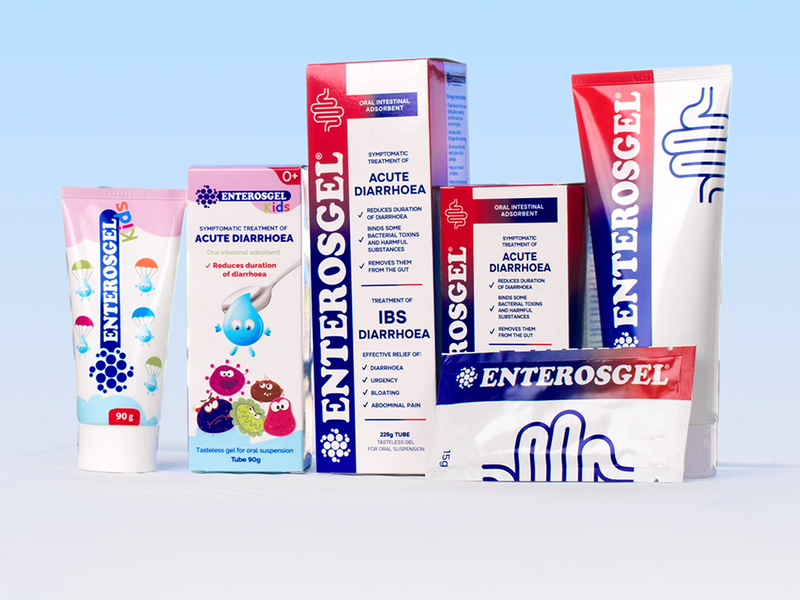
ENTEROSGEL® Oral Intestinal Adsorbent
ENTEROSGEL® is a CE Certified medical device for oral administration, available over-the-counter and listed on the drug tariff in the UK for the symptomatic treatment of acute diarrhoea and treatment of irritable bowel syndrome with diarrhoea (IBS-D).
The active component of ENTEROSGEL® is an organosilicon compound; polymethylsiloxane polyhydrate, which is ingested as liquid gel and acts as an oral intestinal adsorbent.
It travels through GI tract adsorbing certain molecules, whilst neither being absorbed into the systemic circulation nor being metabolised, passing out of the gut unchanged (1). It has no pharmacological action.
You can access the technical datasheet using the link below:
ENTEROSGEL® differs from other intestinal adsorbents in that it is relatively specific for adsorption of larger molecules such as proteins and bacterial toxins, and has a lower adsorption capacity for smaller molecules, e.g. vitamins, minerals and nutrients (1,2).

ENTEROSGEL®on Prescription
In this section you will find all the information you need as a clinician or pharmacist to prescribe and provide ENTEROSGEL® to your patient.
ENTEROSGEL® is listed by the NHS as a medical device that a GP can prescribe when suitable for the patient. ENTEROSGEL® is still a new medical device to many healthcare professionals. Even though there are many clinical studies including 2 published UK studies, some GPs may not have heard of ENTEROSGEL®, but many have been recommending ENTEROSGEL® to their patients to buy OTC for years already.
Now that ENTEROSGEL® is available on prescription, many patients with IBS-D and some with acute diarrhoea especially children and the elderly, would benefit from being able to try this effective treatment on prescription.
Some GPs prefer a treatment to be listed on their local formularies as well as the national Drug Tariff. We can provide the relevant effectiveness and cost/benefit data to you, so that you can apply to your local ICB formulary for inclusion of ENTEROSGEL®. (contact us at: research@enteromed.co.uk)



